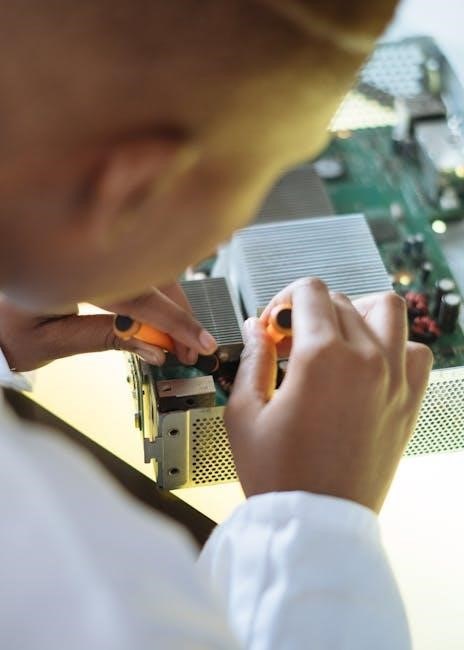ge stackable washer dryer repair manual
- Published
- in Manuals
GE Stackable Washer Dryer Repair Manual: A Comprehensive Guide
Welcome to your ultimate resource for GE stackable washer and dryer repair! This guide offers troubleshooting tips and step-by-step instructions for fixing common issues. Whether you’re a DIY enthusiast or just trying to save on repair costs, we’re here to help.
Understanding GE Stackable Washer Dryer Models
GE stackable washer and dryer units are popular for their space-saving design and convenience, commonly found in apartments and smaller homes. Before attempting any repairs, it’s crucial to understand the different models and their specific features. GE offers a range of stackable units, each with unique control panels, internal components, and diagnostic capabilities.
Familiarize yourself with your specific model number, typically found on a sticker inside the washer door or on the back panel. This number will be essential for finding accurate repair information and compatible replacement parts. Different models may have varying diagnostic modes and error codes, which are critical for effective troubleshooting.
Furthermore, understanding the basic mechanics of both the washer and dryer components within the stackable unit is key. The washer includes the inner tub, pump, and motor, while the dryer consists of the heating element, drum, and blower. Knowing how these systems interact will greatly assist in diagnosing and resolving common problems.

Common Problems and Troubleshooting
GE stackable washer and dryer units, while reliable, can experience common issues over time. Identifying these problems early can prevent more extensive damage and costly repairs. Frequent issues include the washer not draining, the dryer not spinning or heating, unusual noises during operation, and error codes displayed on the control panel.
When troubleshooting, always start with the simplest solutions. Check the power cord and circuit breaker to ensure the unit is receiving power. Inspect water supply hoses for kinks or blockages. For drainage problems, examine the drain hose for clogs and verify the pump is functioning correctly.
If the dryer isn’t heating, check the lint filter and exhaust vent for obstructions. Overheating due to poor ventilation is a common cause of dryer malfunction. If these basic checks don’t resolve the issue, consult the diagnostic mode for error codes, which can pinpoint specific component failures. Remember safety first – always disconnect power before attempting any repairs.
Washer Not Draining
A washer that refuses to drain is a common and frustrating problem. The first step in troubleshooting is to ensure the drain hose isn’t kinked, clogged, or improperly installed. The hose should have a smooth, unobstructed path to the drainpipe or sink.
Next, inspect the drain pump. This pump is responsible for expelling water from the washer tub. Check for any obstructions, such as small items of clothing or debris, that may be blocking the impeller. A humming sound from the pump, without water draining, often indicates a blockage.
If the drain pump seems clear, it might be malfunctioning. Use a multimeter to test the pump’s electrical continuity. A lack of continuity suggests the pump needs replacement. In some cases, the issue could be a faulty lid switch or timer control board, preventing the drain cycle from initiating. Refer to your model’s diagnostic mode for specific error codes to help pinpoint the problem.
Dryer Not Spinning or Heating
A dryer that fails to spin or heat is a significant inconvenience. Start by checking the power supply and ensuring the dryer is receiving electricity. If the dryer spins but doesn’t heat, the heating element is a likely culprit. Use a multimeter to test the heating element for continuity; if there’s no continuity, replace it.
If the dryer doesn’t spin, the drive belt might be broken or worn. Inspect the belt for damage and replace it if necessary. The motor could also be the issue. A faulty motor won’t spin the drum. Test the motor windings for continuity. Additionally, check the thermal fuse, which is a safety device that can blow if the dryer overheats. A blown thermal fuse will prevent the dryer from operating.
Another possible cause is a blocked vent. A clogged vent restricts airflow, causing the dryer to overheat and potentially preventing it from spinning. Clean the vent regularly to ensure proper airflow and prevent fire hazards. If these steps don’t solve the problem, the timer control board may be faulty.
Using Diagnostic Mode
GE stackable washer and dryer combos often have a diagnostic mode that can help pinpoint issues. To enter diagnostic mode, first ensure the unit is plugged in. The specific button sequence varies by model, but a common method involves pressing and holding the Start button for about 5 seconds. Some models might require pressing Start and Cancel simultaneously.
Once in diagnostic mode, the control panel will display error codes or allow you to run specific tests. Use the arrow keys to navigate the diagnostic menu. Select a test cycle by pressing the Start button. This can help isolate problems with components like the motor, pump, or heating element.

Diagnostic mode can reveal valuable information about the dryer’s functionality, helping you identify the source of the problem more efficiently. If you encounter an error code, consult your appliance’s service manual or search online to understand its meaning. Remember to unplug the unit for a minute and plug it back in before starting, this may help to reset the system.
Entering Diagnostic Mode
Accessing the diagnostic mode on your GE stackable washer dryer is crucial for effective troubleshooting. The process varies slightly depending on the model, but generally involves a sequence of button presses. A common method is to unplug the unit for one minute and then plug it back in to reset the system before entering diagnostic mode. Next, simultaneously press and hold the ‘Start’ and ‘Cancel’ buttons.

Keep these buttons pressed for a few seconds until the control panel display changes, indicating that you have successfully entered the diagnostic mode. The display may show a series of codes or options. Consult your specific model’s service manual for precise instructions, as incorrect button combinations can prevent access or trigger unintended functions. Some models might use the ‘Start’ button held for five seconds to initiate the diagnostic mode.
Once in diagnostic mode, you can navigate through various tests and error codes to diagnose the problem. Remember to record any error codes displayed, as they will be essential for identifying the faulty component. Always refer to the service manual for interpreting these codes and understanding the tests available.

Navigating and Selecting Tests
Once you’ve successfully entered the diagnostic mode on your GE stackable washer dryer, the next step involves navigating the menu and selecting the appropriate tests. Typically, you’ll use the arrow keys or the cycle selection knob to scroll through the available options displayed on the control panel. Refer to your appliance’s service manual to understand the specific tests relevant to your suspected issue.
The diagnostic menu usually includes tests for various components, such as the water pump, motor, heating element, and sensors. Select the test that corresponds to the symptom you’re experiencing. For example, if the washer isn’t draining, choose the pump test. After highlighting the desired test, press the ‘Start’ button to initiate it. The appliance will then run the selected test, and the results will be displayed on the control panel.
Pay close attention to any error codes or unusual behavior during the test. These observations are crucial for pinpointing the faulty component. If a test fails or displays an error code, consult the service manual for interpretation and troubleshooting steps. Some tests may require you to manually observe the component’s function to determine if it’s operating correctly. Always prioritize safety and disconnect the power supply before physically inspecting any components.
Reassembly After Repair
After completing the necessary repairs on your GE stackable washer dryer, proper reassembly is crucial for restoring the appliance to its optimal working condition. Before you begin, ensure that the power is disconnected to prevent any electrical hazards. Start by carefully reconnecting any wiring harnesses or connectors that were detached during the disassembly process. Double-check that each connection is secure and properly aligned.
Next, reattach any components that were removed, such as panels, brackets, or covers. Use the appropriate screws or fasteners to secure them in place, ensuring they are tightened to the correct torque specifications. Pay attention to the order in which the components were disassembled, and reverse the process accordingly. Refer to your appliance’s service manual for detailed diagrams and instructions.
Once all the components are reattached, carefully inspect the reassembled unit to ensure that everything is properly aligned and there are no loose parts. Double-check all connections and fasteners before restoring power to the appliance. After restoring power, run a test cycle to verify that the repairs were successful and the appliance is functioning correctly. If any issues persist, retrace your steps and consult the troubleshooting section of this guide.
Reinstalling the Inner Tub
Reinstalling the inner tub in your GE stackable washer dryer is a critical step in the reassembly process. Before you begin, ensure the washer is disconnected from the power source. Carefully lift the inner tub and align it with the washer’s outer tub and suspension system. Ensure that the tub is properly seated and centered within the outer tub to prevent vibrations during operation.
Next, reconnect any hoses or tubes that were detached from the inner tub during disassembly. Make sure the connections are secure and properly sealed to prevent leaks. If necessary, replace any worn or damaged hoses to ensure optimal performance. Once the hoses are connected, reattach the balance ring to the top of the inner tub. The balance ring helps to stabilize the tub during high-speed spin cycles.
Finally, secure the inner tub to the washer’s drive shaft using the appropriate fasteners, such as bolts or nuts. Tighten the fasteners to the specified torque to prevent the tub from coming loose during operation. Double-check that all connections are secure and the inner tub is properly aligned before proceeding with the reassembly of other components.
